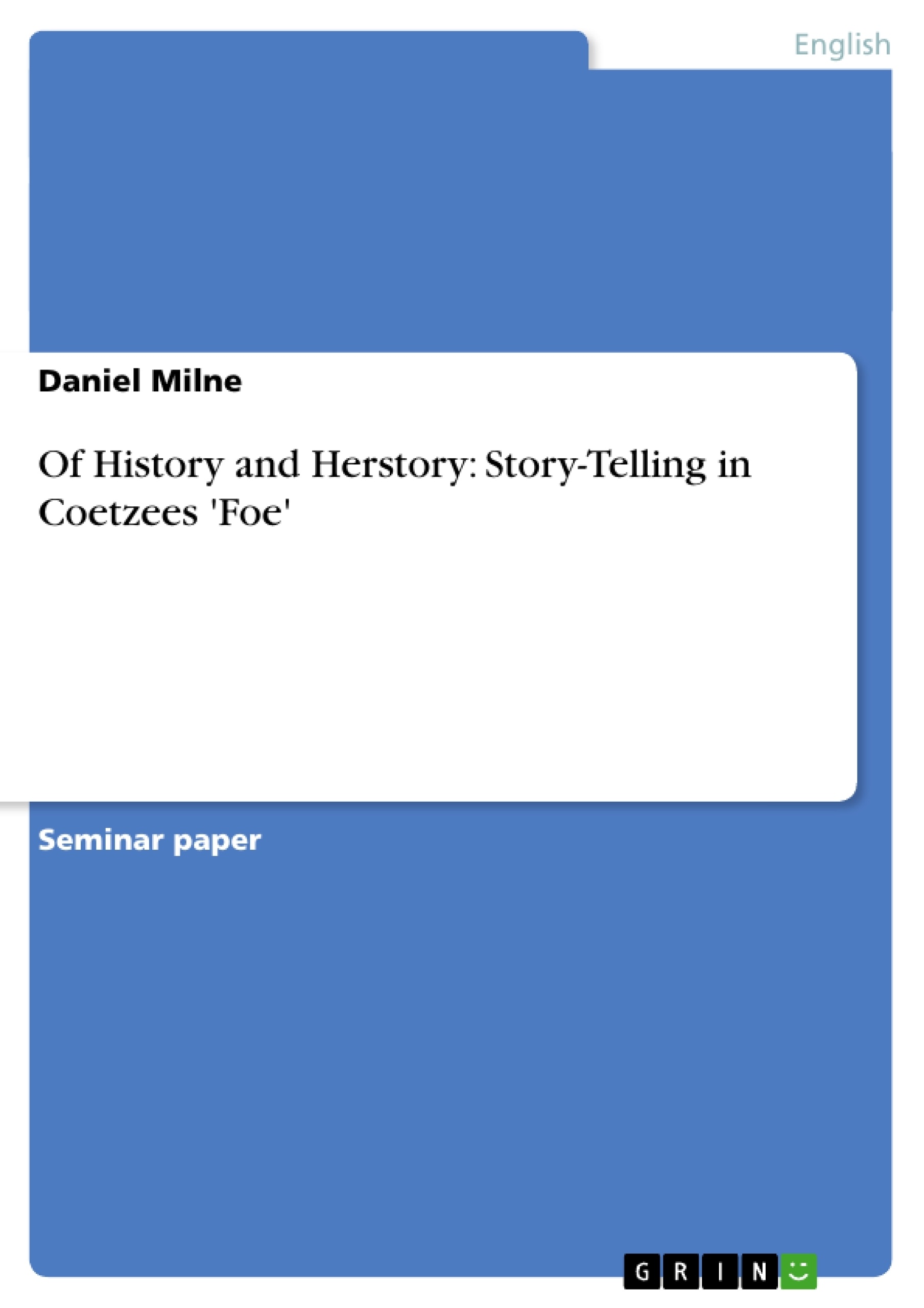The South African J.M. Coetzee's novel Foe, written in 1986, serves as an example of how established narrative conventions can be altered and twisted by adopting elements from different narrative approaches, which are combined into an interesting, unique and well-rounded novel.
In this term paper I would like to analyse the unconventional way in which the many stories of Coetzee's Foe are told. I will begin by closely examining the narrative situation, which - although it might appear so during the first reading - does not stay constant throughout the novel's discourse. In the second part of my analysis, I will concentrate on the level of the characters and the story, in which both a variety of stories are told as well as the perspectives are alternated perpetually. Finally, I will have a look at what I would call one of the novel's major storylines - the story about story telling itself. This 'meta-storytelling' (or 'meta-narration') is what binds all elements of Foe together to one cohesive piece of literature.
Inhaltsverzeichnis (Table of Contents)
- Introduction: Structure and Aims of this Paper
- Story-Telling in Foe: An Analysis
- The Level of Narrative Transmission: Narrators
- The Level of the Characters: Perspectives and Stories
- Conclusion
- Bibliography
Zielsetzung und Themenschwerpunkte (Objectives and Key Themes)
This paper aims to analyze the unconventional narrative structure of J.M. Coetzee's novel Foe. By examining the interplay between narrators, perspectives, and stories, it aims to understand how the novel challenges traditional narrative conventions.
- Narrative transmission and the role of the narrator
- The complexity of storytelling in the novel
- The perspectives and stories of the characters
- The "meta-storytelling" of the novel
- The impact of the novel's unconventional narrative structure
Zusammenfassung der Kapitel (Chapter Summaries)
The first chapter provides an overview of the novel's narrative structure and introduces the key themes and concepts to be explored. The second chapter analyzes the level of narrative transmission, focusing on the multiple narrators and their roles in shaping the story. This chapter delves into the narrative situation, identifying the different voices and perspectives involved.
The third chapter examines the level of the characters and the stories they tell. It discusses the interplay between different perspectives and narratives, exploring how the novel's characters create and interpret their experiences. This chapter also examines the impact of these diverse perspectives on the overall narrative.
Schlüsselwörter (Keywords)
The key concepts explored in this paper include narrative transmission, narrator, perspective, storytelling, character, and meta-narration. It examines the unconventional narrative structure of J.M. Coetzee's novel Foe and its impact on the reader's understanding of the story.
- Quote paper
- Daniel Milne (Author), 2008, Of History and Herstory: Story-Telling in Coetzees 'Foe', Munich, GRIN Verlag, https://www.grin.com/document/132447



